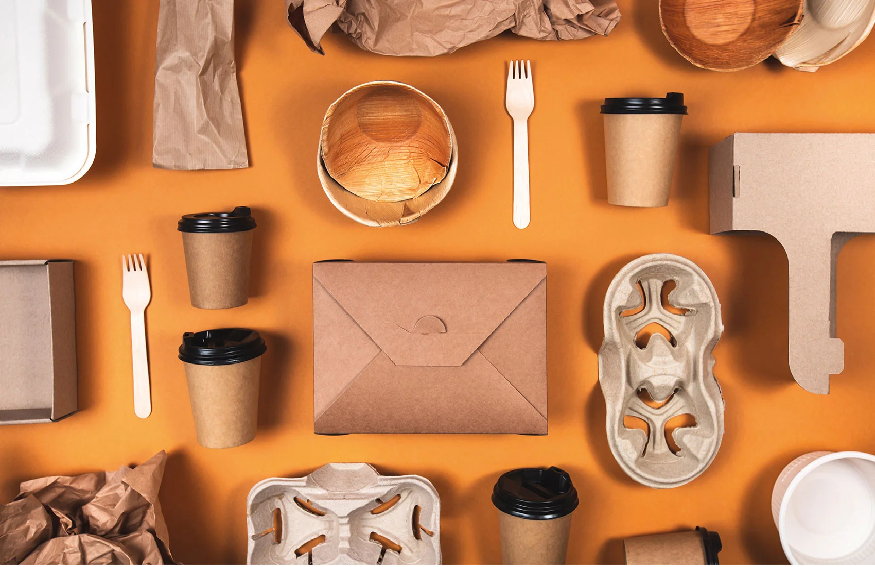What Food Packaging Is Most Environmentally Friendly?

Packaging is a fairly complicated topic because, whenever people discuss sustainable packaging whatsoever, people also bring up issues from a wide range of areas, such as socioeconomic status, democratic accountability, and policy, management systems, preservation of food, waste management, as well as supply chains, to mention a few. There isn’t a one-size-fits-all solution for sustainable food packaging in UAE since all of these variables must be taken into consideration while searching for best practices.
In that case, what are sustainable packaged foods?
Let’s begin by taking a look at a few of the available options. These sustainably packaged food examples could or might not work for you, just like the sustainable living advice. Not the only thing.
1. Packaging made with no waste
The waste reduction movement takes on packaging head-on, which appears to be among the greatest ways to deal with the massive waste issue. Examples of zero-waste projects include making a zero-waste restroom, zero-waste closet, or altogether zero-waste kitchens. And science concurs. Everything is based on the 5 Rs: Refuse, Reduction, Reuse, Recycling, and Rot. It’s also rather beautiful and straightforward. It does call for developing new habits, though, which is among the hardest things for people to accomplish. Not to forget the pain one may experience while forming any of the above new behaviours. A zero-waste strategy to packaging has to combine package-free choices like bulk bins with reusables such as reusable cloth bags & glass jars. It could also need a lot of confidence and a small bit of bravery.
Favoured things
The fact that this choice challenges us to think more carefully about the items one chooses and the package they come in is among the things one enjoys about it. One may go package-free & bring the reusable containers rather to the butcher counter, pantry essentials such as pasta and wheat, the bakeries, or the favourite coffee places. As a result, one uses fewer plastic bags within the fruit aisle, tray & plastic film for poultry and fish, sheet film combinations in the middle aisle, & a lot more.
Additionally, resources are needed to create reusables. For instance, cotton is indeed a crop that requires a lot of water when it comes to reusable bags. Tumblers composed of plastic still are comprised of plastic. Likewise, polyester bags. In addition to just that, they need water to also be cleaned or dried. Additionally, even though one has undertaken some probably absurd liberties in using water in terms of sustainability, consumption of water still plays a role in this.
What is the conclusion on zero wastes packaging, then? In a opinion, everyone benefits. It promotes attentive eating and lowers the amount of trash generated by food packaging. The idea of striving for perfect zero waste is worthwhile. On that, experts believe it is preferable to just do your hardest. This isn’t achievable, as many of the most powerful proponents of zero waste acknowledge.
2. rPET
In the opinion, recycled plastic is indeed a big no-no. Aside from the cliché “You can’t afford to live with that as well, you can’t survive without it,” the issue with plastic is absurd &, if one is honest, seriously puts into question intelligence and sanity. Are people using it? Yes. Do people enjoy it? Not. Recycled plastic is the same.
Favoured things
Is reclaimed plastic preferable to virgin plastics? Sure. Is it nice when something is taken from the seas and transformed into something you require? Definitely. You award rPET a perfect score for effort for just that. However, it is also difficult to overlook the fact that, despite these initiatives, the consumption of virgin plastic is still rising while no concrete steps have been made to restrict plastic usage to the bare minimum. If there are any sceptics left, one wishes to point them out to all the plastics that are now circling the Atlantic & Pacific. as well as the 91 percent of plastic that is not recycled whatsoever. This is wrong, as well as rPET isn’t the answer.
3. Bioplastics
Bioplastics are polymers that may be made from a variety of materials, including maize, sugarcane, soya, & algae, and thus are compostable or disposable. They may be classified as being either synthetic, such as PHA (other “degradable” polymer), or non-natural, such as polyvinyl alcohol. Natural materials include starches, proteins, chitosan (derived by shellfish), or cellulose (a.k.a PVA, generally used to prepare dishwasher tabs).
Favoured things
Certain of these substances are designed to decay in a landfill while not leaving over potentially dangerous chemicals. Made from chitosan, gelatines, or algae, some of them are edible.
4. Biodegradable packaging
The same may be said about biodegradable packaging. Almost everywhere uses compostable food packaging in the UAE consisting of materials such as cardboard, & bioplastics. Don’t be fooled by the label that says they are biodegradable; you may get them in takeaway or at the neighbourhood coffee shop.
Favoured things
Humans like the fact that a portion of these goods may be decomposed and contributed to a compost pile at home.
5. Husk of rice
A cheap, renewable, & biodegradable residue of rice production is rice husk. According to a research, rice husk has bio-adsorbent qualities, which means it may take up toxins from its surroundings. This substance is used to create items like shatterproof bowls and top & sealable lunches.
6. A gelatine film
Due to their benign qualities, affordability, and consistent film-forming ability, gelatine films are growing in popularity for food packaging. Gelatine was generally regarded as safe (GRAS) like a food additive, as determined by the Food & Drug Administration. (FDA). Staphylococcus aureus & E. coli are two prevalent pathogens responsible for foodborne disease. Gelatine films were loaded with antibacterial cellulose, which prevents their development. Gelatine films are a safer choice than traditional plastics because of their active fillers. For packaged foods made of gelatine, the two major fillers are microcrystalline celluloses (MCC) & rosin-grafted cellulose nanocrystals (r-CNCs).
Use reusable packaging and items made from metal, glassware, and plant-based substances to cut down on the amount of petroleum-based, single-consume plastics like the merry Christmas sticker you use.



